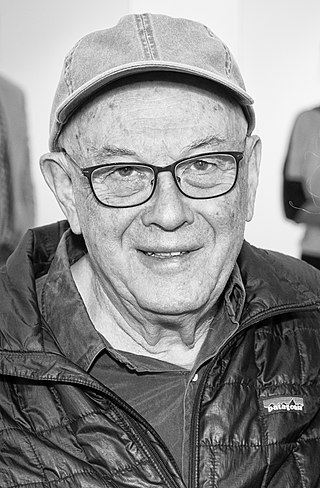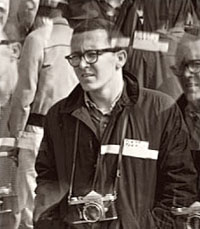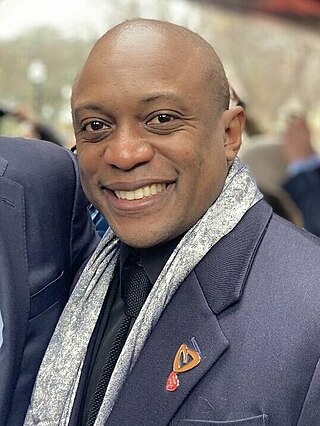Related Research Articles

The civil rights movement was a social movement and campaign from 1954 to 1968 in the United States to abolish legalized racial segregation, discrimination, and disenfranchisement in the country. The movement had its origins in the Reconstruction era during the late 19th century and had its modern roots in the 1940s, although the movement made its largest legislative gains in the 1960s after years of direct actions and grassroots protests. The social movement's major nonviolent resistance and civil disobedience campaigns eventually secured new protections in federal law for the civil rights of all Americans.

Hattiesburg is the 5th most populous city in the U.S. state of Mississippi, located primarily in Forrest County and extending west into Lamar County. The city population was 45,989 at the 2010 census, with the population now being 48,730 in 2020. Hattiesburg is the principal city of the Hattiesburg Metropolitan Statistical Area, which encompasses Covington, Forrest, Lamar, and Perry counties. The city is located in the Pine Belt region.

Freedom Summer, also known as the Freedom Summer Project or the Mississippi Summer Project, was a volunteer campaign in the United States launched in June 1964 to attempt to register as many African-American voters as possible in Mississippi. Blacks had been restricted from voting since the turn of the century due to barriers to voter registration and other laws. The project also set up dozens of Freedom Schools, Freedom Houses, and community centers such as libraries, in small towns throughout Mississippi to aid the local Black population.

Danny Lyon is an American photographer and filmmaker.
Charles Lee Moore was an American photographer known for his photographs documenting the Civil Rights Movement. Probably his most famous photo is of Martin Luther King Jr.'s arrest for loitering on September 3, 1958. It is this photo that sparked Moore's involvement in the Civil Rights Movement.

Doris Adelaide Derby was an American activist and documentary photographer. She was the adjunct associate professor of anthropology at Georgia State University and the founding director of their Office of African-American Student Services and Programs. She was active in the Mississippi civil rights movement, and her work discusses the themes of race and African-American identity. She was a working member of the Student Nonviolent Coordinating Committee (SNCC) and co-founder of the Free Southern Theater. Her photography has been exhibited internationally. Two of her photographs were published in Hands on the Freedom Plow: Personal Accounts by Women in SNCC, to which she also contributed an essay about her experiences in the Mississippi civil rights movement.

Bruce Landon Davidson is an American photographer. He has been a member of the Magnum Photos agency since 1958. His photographs, notably those taken in Harlem, New York City, have been widely exhibited and published. He is known for photographing communities that are usually hostile to outsiders.
Victoria Jackson Gray Adams was an American civil rights activist from Hattiesburg, Mississippi. She was one of the founding members of the influential Mississippi Freedom Democratic Party.

James "Spider" Martin was an American photographer known for his work documenting the American Civil Rights Movement in 1965, specifically Bloody Sunday and other incidents from the Selma to Montgomery marches.
Sanford Rose Leigh, also known as Sandy Leigh was an activist during the Civil Rights Movement and the director of the largest project in Mississippi Freedom Summer, the Hattiesburg Project.

Ernest C. Withers was an African-American photojournalist. He documented over 60 years of African-American history in the segregated Southern United States, with iconic images of the Montgomery bus boycott, Emmett Till, Memphis sanitation strike, Negro league baseball, and musicians including those related to Memphis blues and Memphis soul.

Hank Willis Thomas is an American conceptual artist. Based in Brooklyn, New York, he works primarily with themes related to identity, history, and popular culture.
Benedict Joseph Fernandez III was an American educator and journalistic and documentary street photographer. He is noted for photographing the protest movements of the 1960s, particularly those of the civil rights movement and the anti-Vietnam War movement.
The history of the 1954 to 1968 American civil rights movement has been depicted and documented in film, song, theater, television, and the visual arts. These presentations add to and maintain cultural awareness and understanding of the goals, tactics, and accomplishments of the people who organized and participated in this nonviolent movement.

Robert H. McNeill was an American photographer who documented African-American life. "In the 1930s and 40s, any time there was a political, social, religious or community event in Washington's black community, Robert H. McNeill was there to photograph it."

Ming Smith is an American photographer. She was the first African-American female photographer whose work was acquired by the Museum of Modern Art in New York City.

Jim Alexander is an American documentary photographer, photojournalist, activist, and teacher who is best known for being a "Participant Observer" and his photographs of human rights and black culture. In 1995, he was the first artist selected in the annual "Master Artist" program conducted by the City of Atlanta Department of Cultural Affairs. He would later be inducted into The HistoryMakers in 2006.

Ceola Wallace was an American seamstress and civil rights activist from Mississippi. She was one of the African-American women who filed lawsuits in the women's poll tax repeal movement to eliminate the requirement to pay taxes before one could vote. She was active in the 1964 voter registration, Freedom Summer Project.
Wayne Sides is an American photographer, artist and educator that is best known for his documentary and conceptual art categories of photography and mixed-media art.
References
- ↑ "The History Makers". Archived from the original on 2017-03-13. Retrieved 2010-01-17.
- ↑ "The Parrish Art Museum - East End Stories - Herbert Randall". The Parrish Art Museum. Archived from the original on 11 August 2011. Retrieved 20 February 2010.
- ↑ "Randall (Herbert) Freedom Summer Photographs". The University of Southern Mississippi Libraries Special Collections. 10 September 2004. Archived from the original on 9 June 2010. Retrieved 20 February 2010.
- ↑ History Makers, Artmakers, Biography [ permanent dead link ]